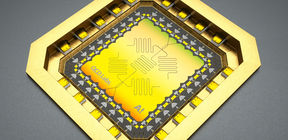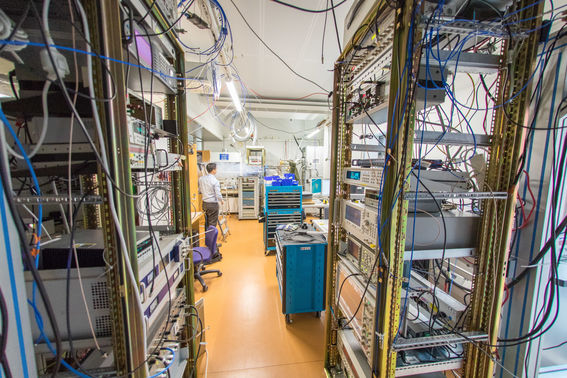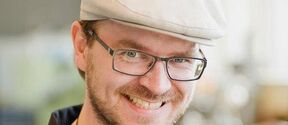In September 2020, researchers at Aalto University and VTT revealed that they had developed a high-speed nano-scale radiation detector—a bolometer—fast enough to read the qubits in a quantum computer.
Now, Professor Mikko Möttönen’s team and their partners have acquired funding to refine the bolometer technology for use not only in quantum computers but also in ultralow-temperature (ULT) freezers and terahertz cameras. The funding is from the Future Makers Funding Program by Technology Industries Finland Centennial Foundation and by Jane and Aatos Erkko Foundation. This would be the first time ever that this bolometer is utilized for practical applications.
Möttönen explains that building a nano-scale bolometer was already a significant feat. ‘We wanted to develop the world’s best radiation detector. It took seven years for us to get it to function, and for three years we have been improving it,’ he says.
The group achieved the speed required by a quantum computer by replacing the gold palladium in the bolometer with graphene. They accomplished this in collaboration with Professor Pertti Hakonen’s team, which specializes in graphene-based devices.
‘We now intend to demonstrate—for the first time ever—information being read from qubits using a thermal radiation detector,’ says Möttönen.
From prototypes to industrial production
VTT is involved in the project by transferring the production from single, manually produced prototypes to industrial-type production. VTT has experience in terahertz bolometers and graphene in the research groups of Sanna Arpiainen and Joonas Govenius. In addition, VTT has its own research professor in the field, Mika Prunnila.
‘We will apply the most recent technology in the graphene production. This is developed together with the European semiconductor industry’, VTT research team leader Sanna Arpiainen says.
The project also seeks to improve ULT freezers, known as cryostats, made by Bluefors, and terahertz cameras by Asqella.
A bolometer can help get rid of heat radiation, which affects the cryostats cooling quantum computers.
‘Currently, thermometers in cryostats measure the temperature of metal discs. A bolometer-based thermometer type can measure the temperature of radiation inside the cryostat,’ says Möttönen.
Cooled terahertz cameras are used to detect heat radiated by humans, for example. With the help of the bolometer, the pixels could become sensitive enough to detect single photons.
‘If we can measure single terahertz photons, we can get rid of a lot of the noise and make the image sharper. Terahertz cameras could be used for security at airports and warehouses, among other things,’ explains Möttönen.

















